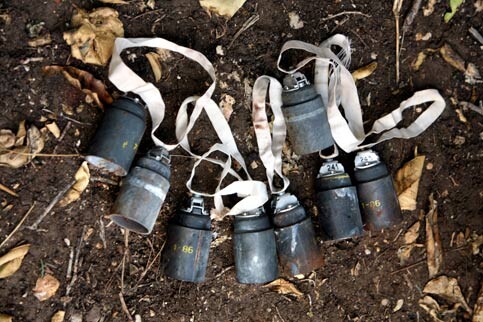Mine Action Coordination Centre Southern Lebanon 19 January 2007

Cluster bombs gathered to be destroyed by mine sweepers in the suburbs of Tyre city in southern Lebanon, 6 October 2006. Unexploded ordnance in southern Lebanon continues to pose great risks to civilians returning to their villages, according to the UN Mine Action Coordination Centre (UNMACC). It estimates that there are at least one million unexploded cluster bomblets in the area. (Manoocher Deghati/IRIN)
Casualties from Unexploded Ordnance
Cluster Bomb Contamination
Types and Quantities of Cluster Bombs
Most cluster bomblets were delivered by rockets or artillery. A limited number appear to have been dropped by aircraft (BLU-63-type bombs). Official and complete statistics about the quantity of cluster bombs used are not available. However, an extrapolation based partly on likely failure or “dud” rates of munitions and partly on media reports about the extent to which various types of cluster bombs were used indicates that up to 1 million unexploded cluster bomblets may be on the ground.
Unexploded Ordnance Other than Cluster Bombs
Operational Response
Funding Information
UN Mine Action Coordination Centre of South Lebanon, 19 January, 2007. In Lebanon, contact Dalya Farran, UN Mine Action Coordination Centre of South Lebanon, Tel. +961-3 527996. farran@un.org. In New York, contact Richard Kollodge, UN Mine Action Service, tel.+1-212 963-5677, kollodge@un.org
Related Links